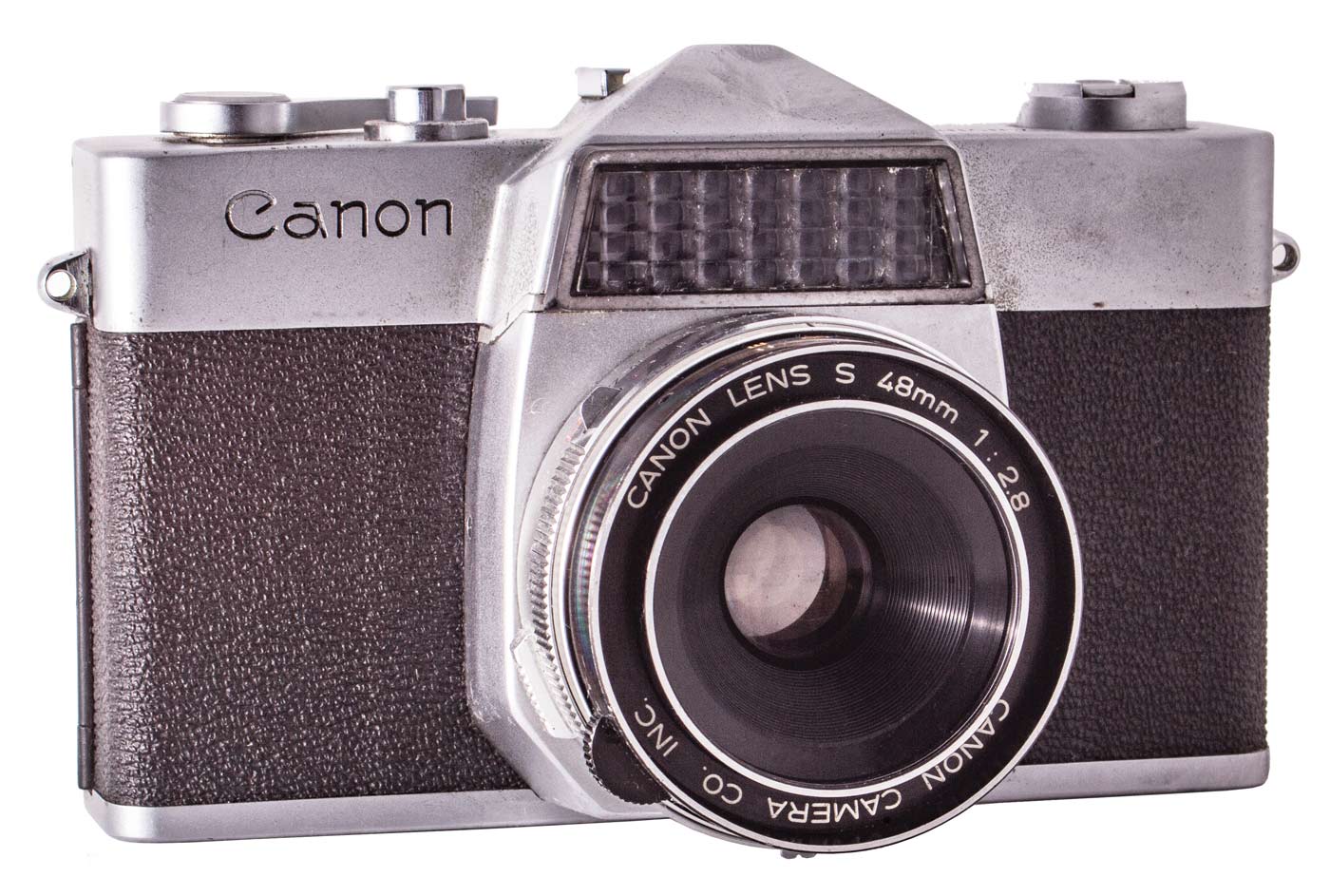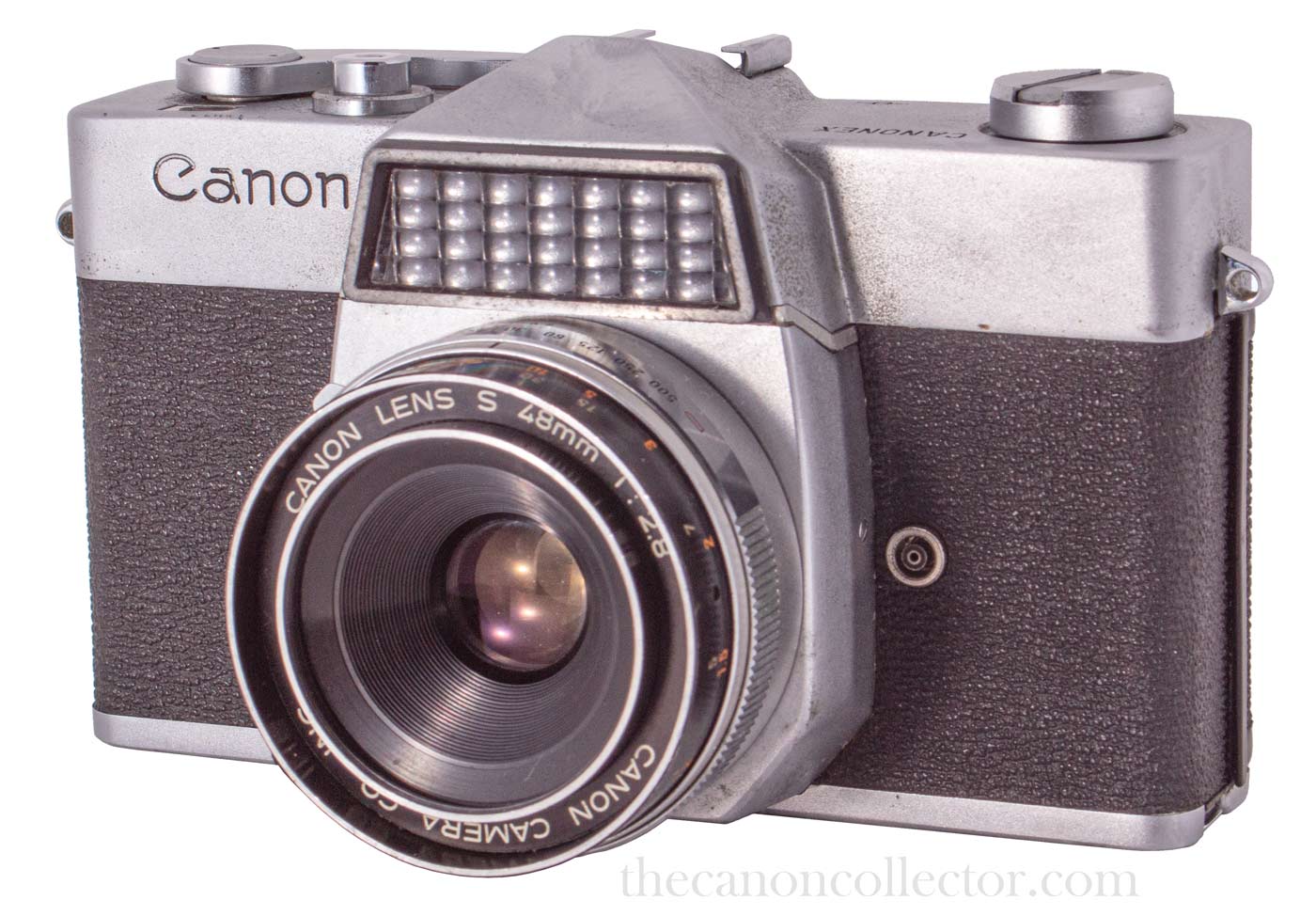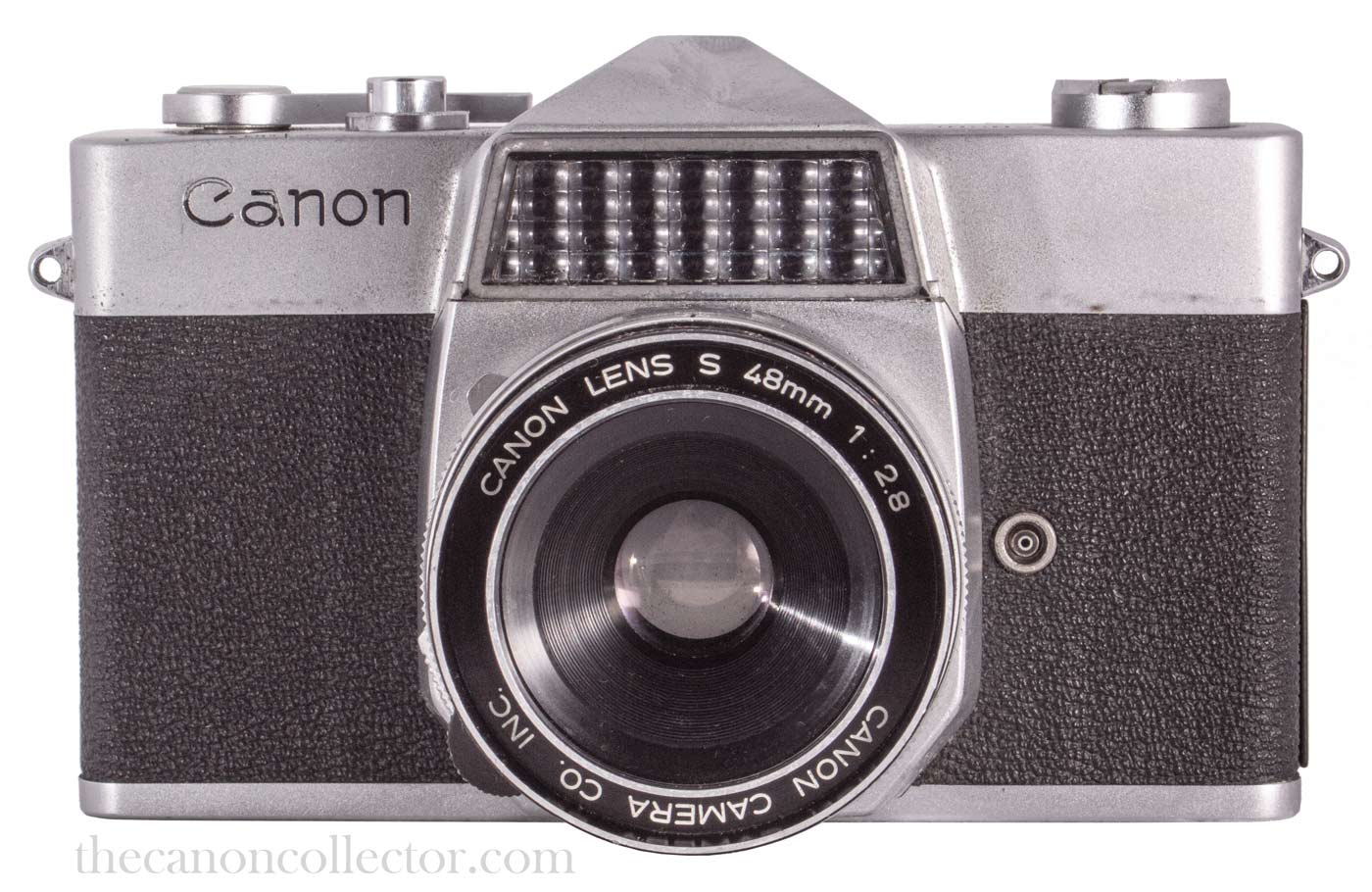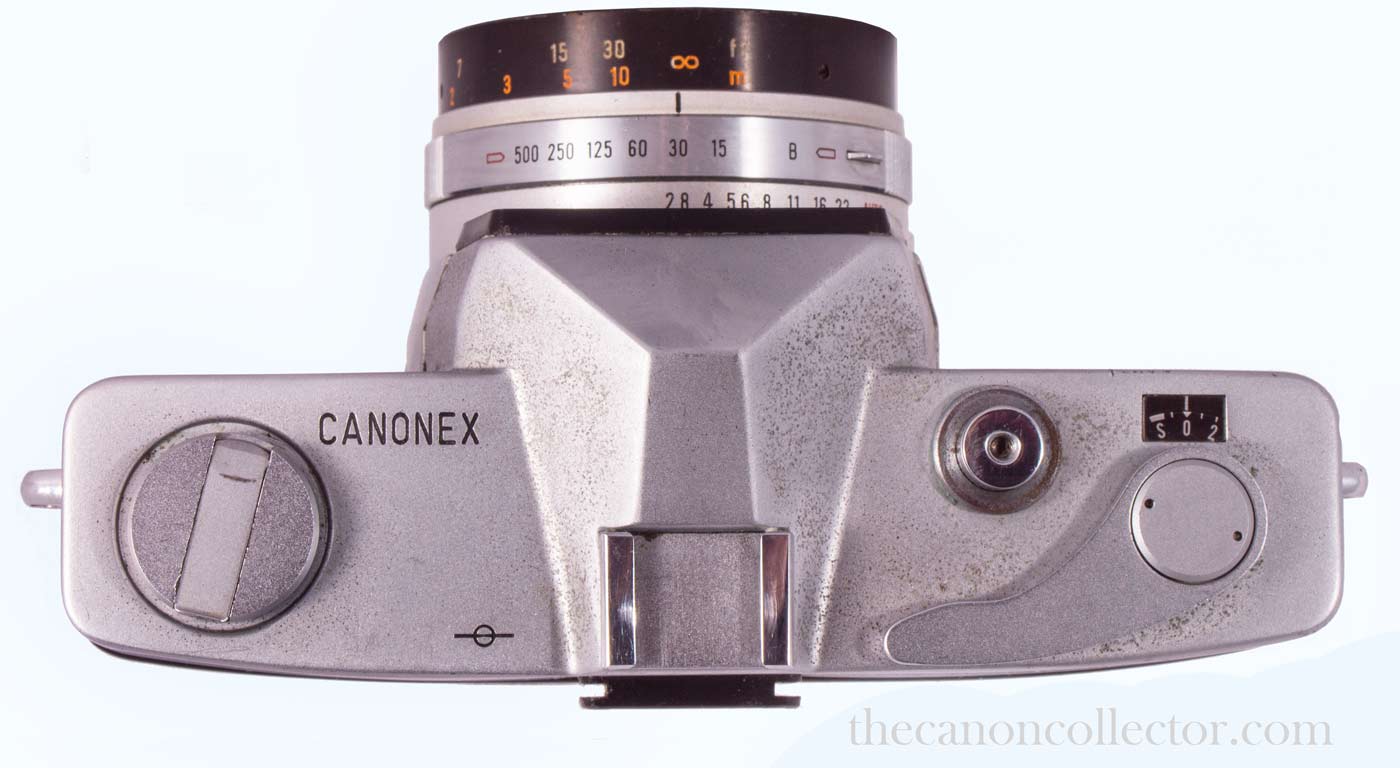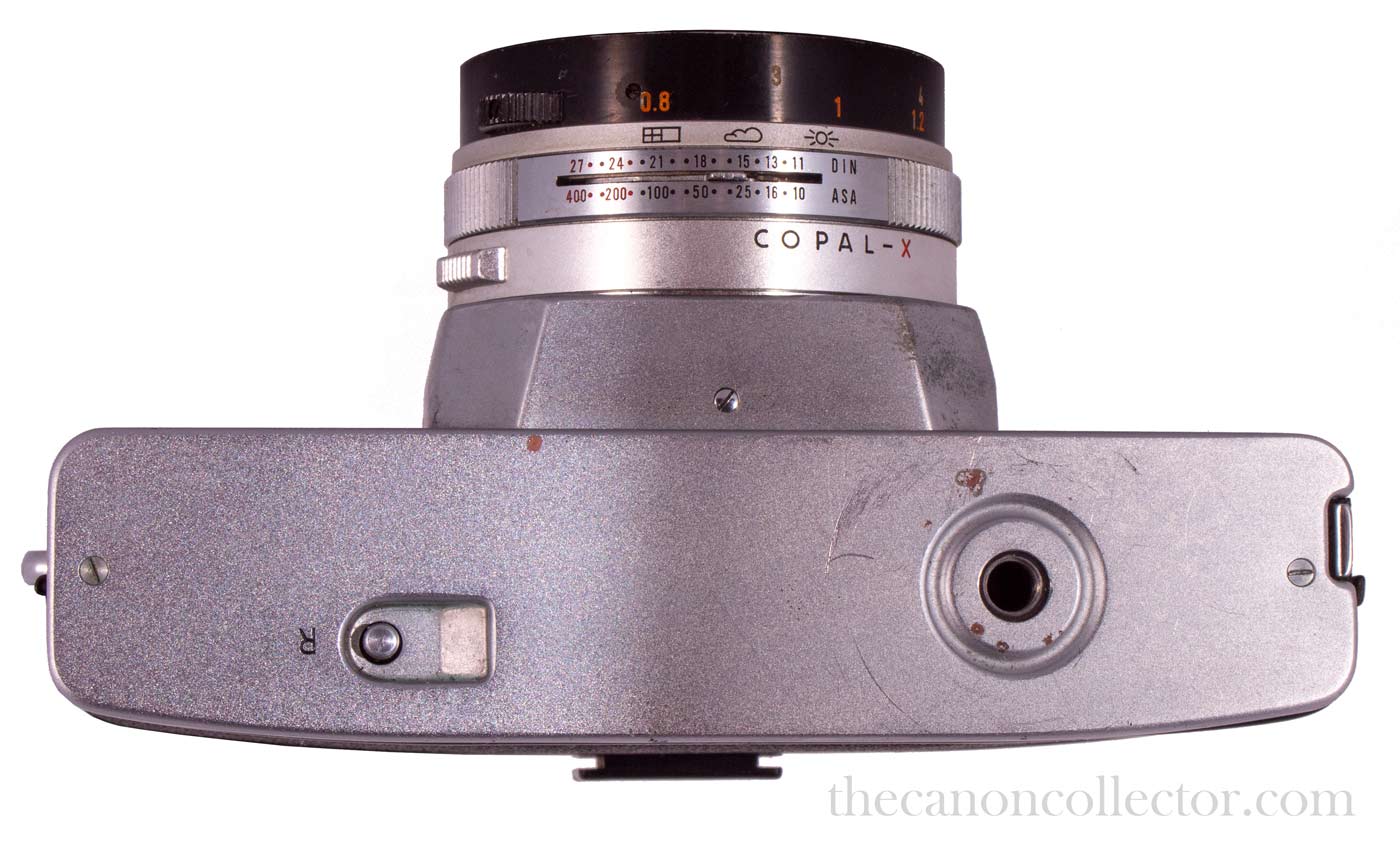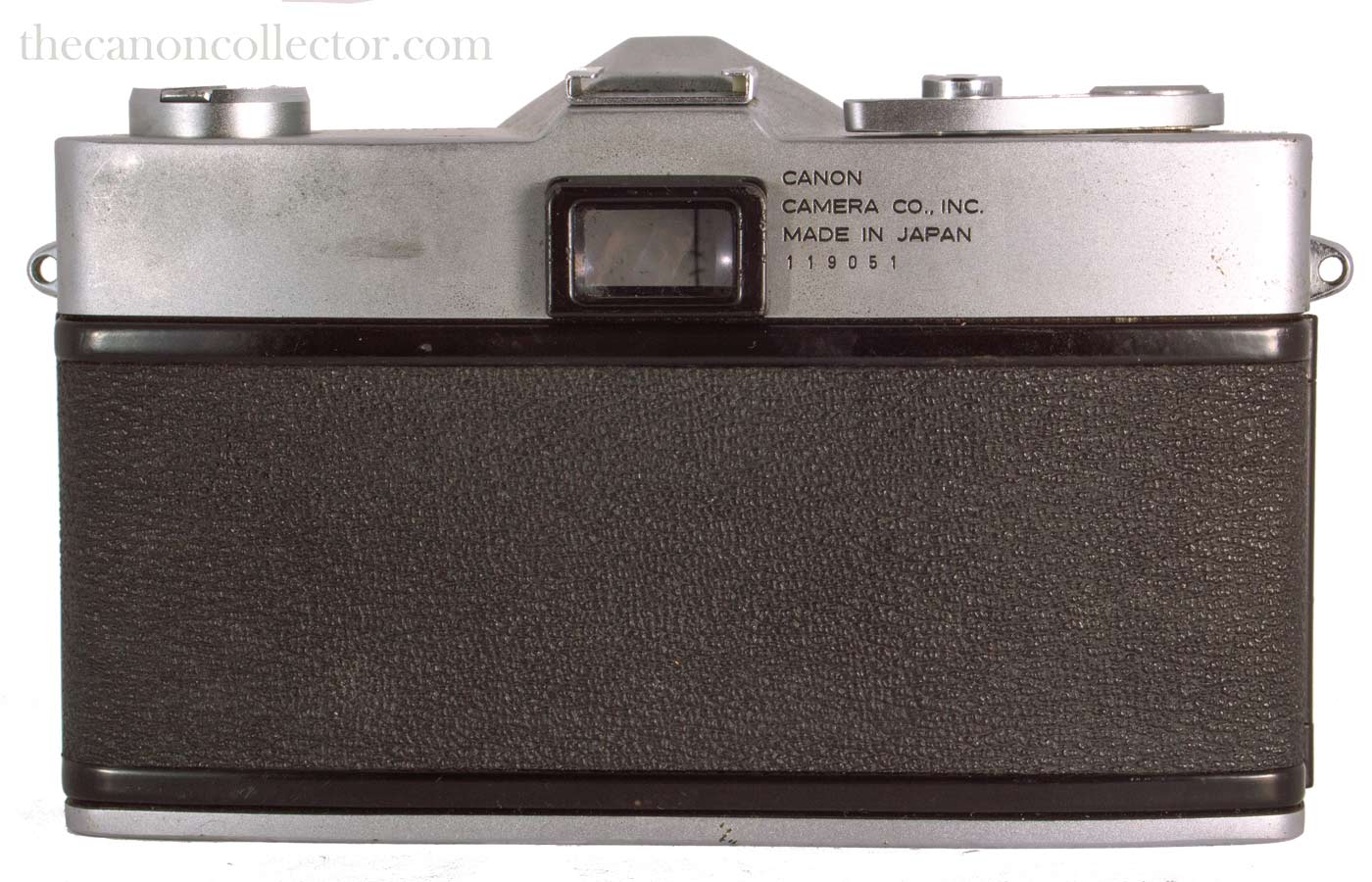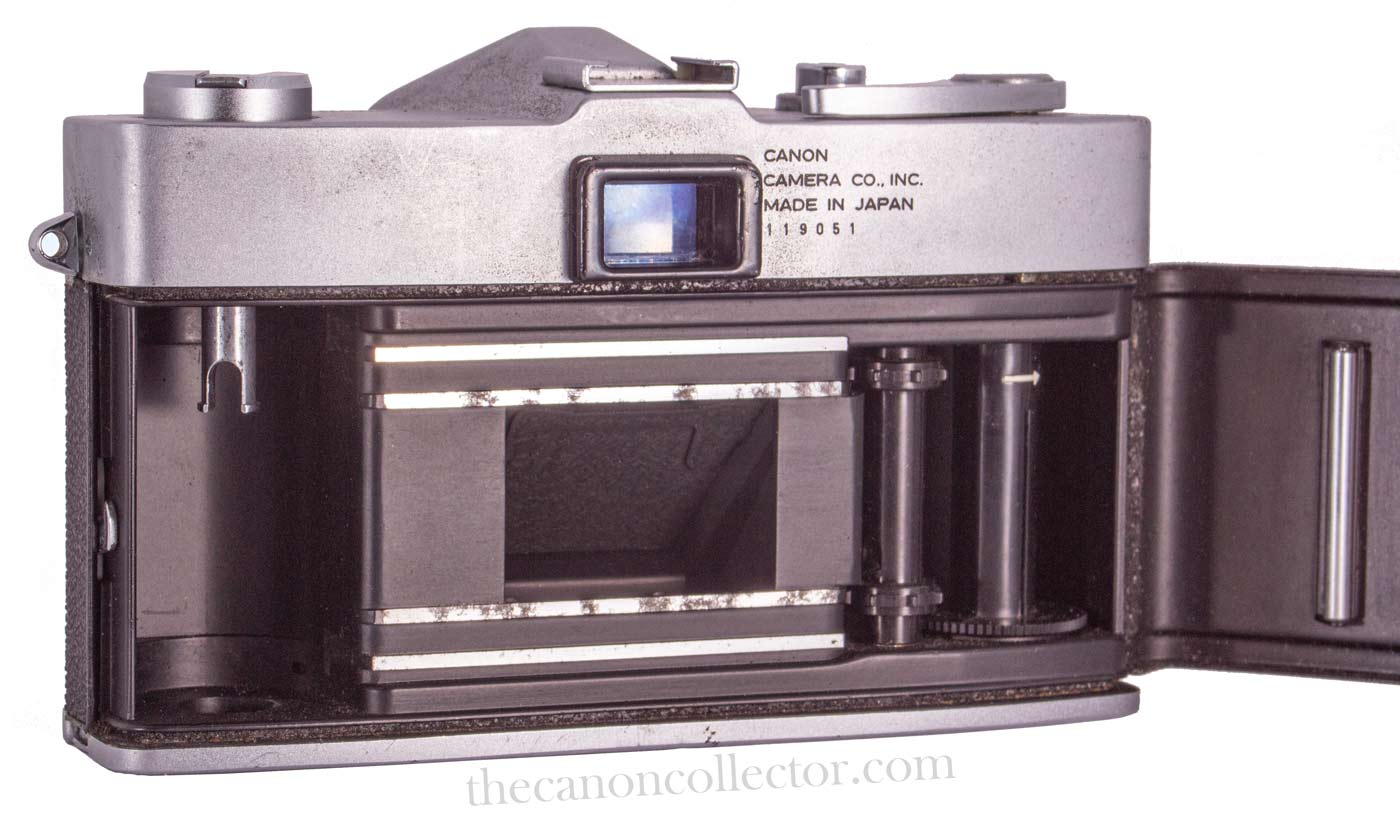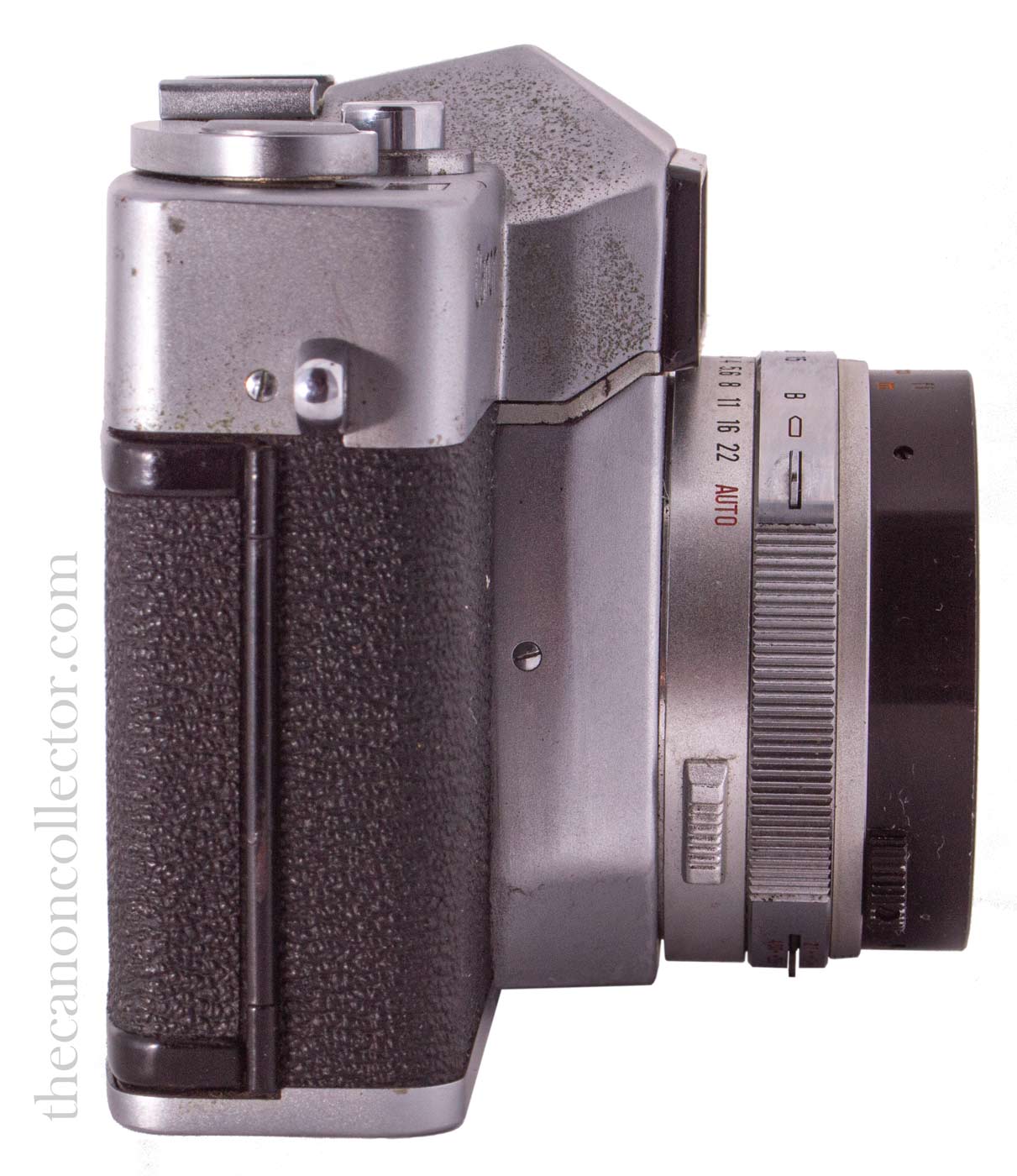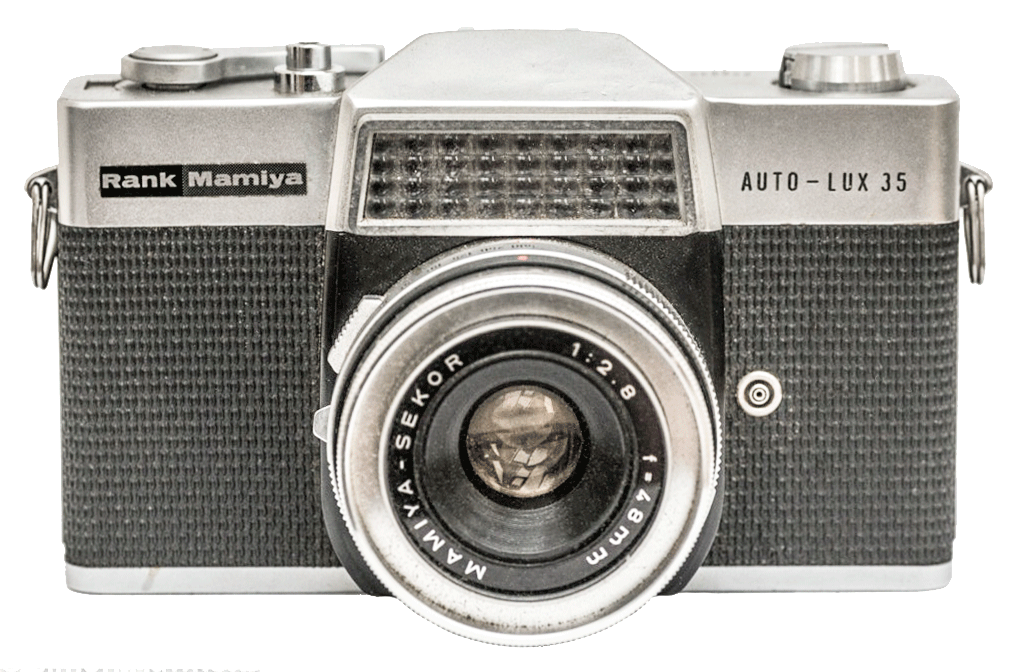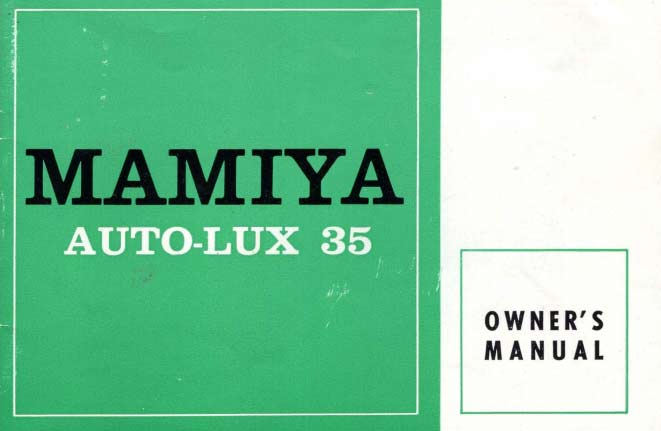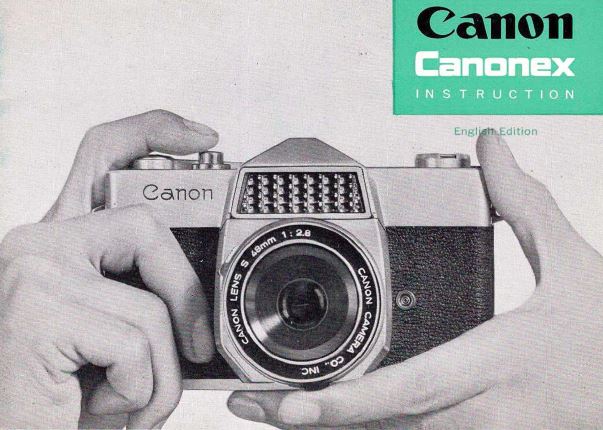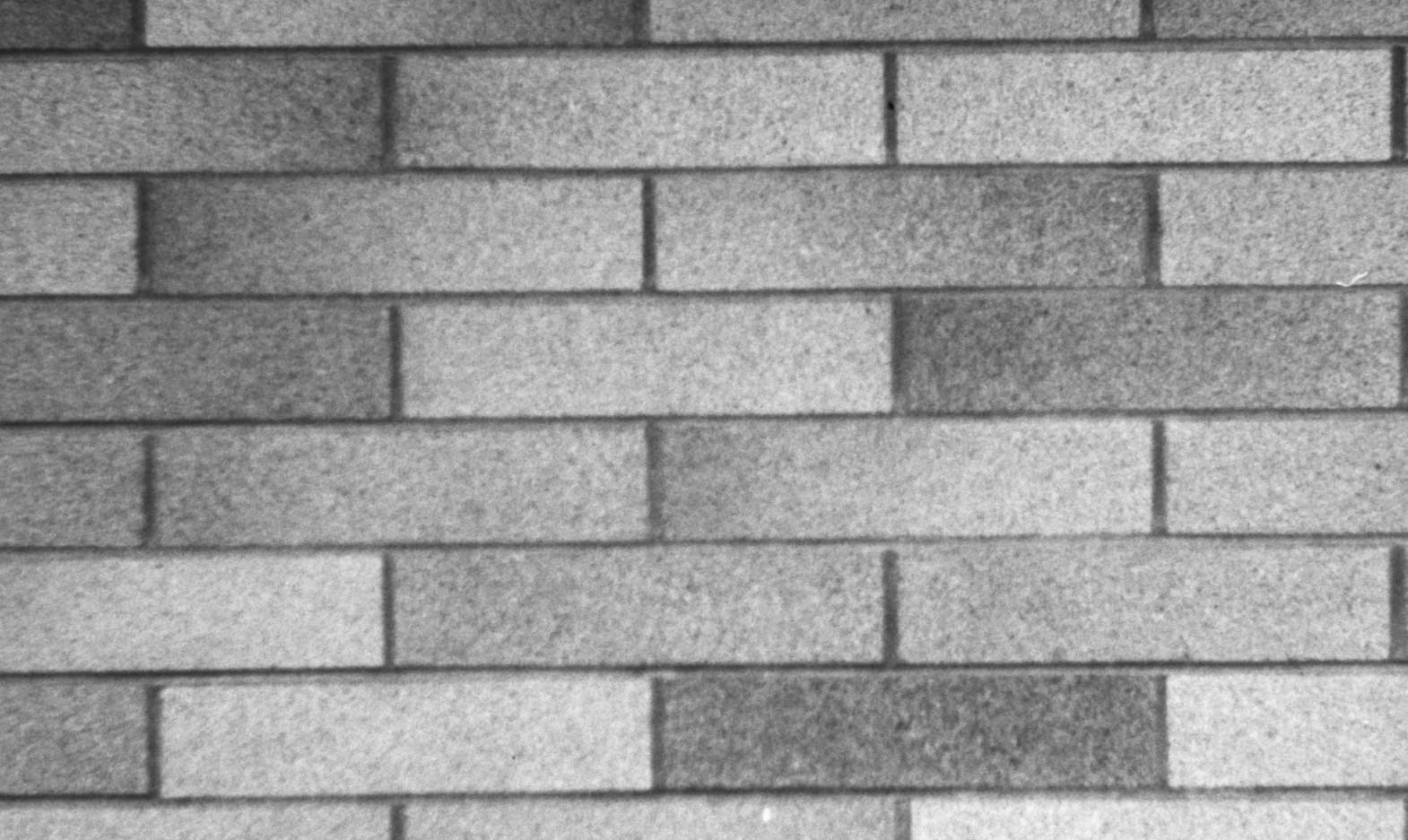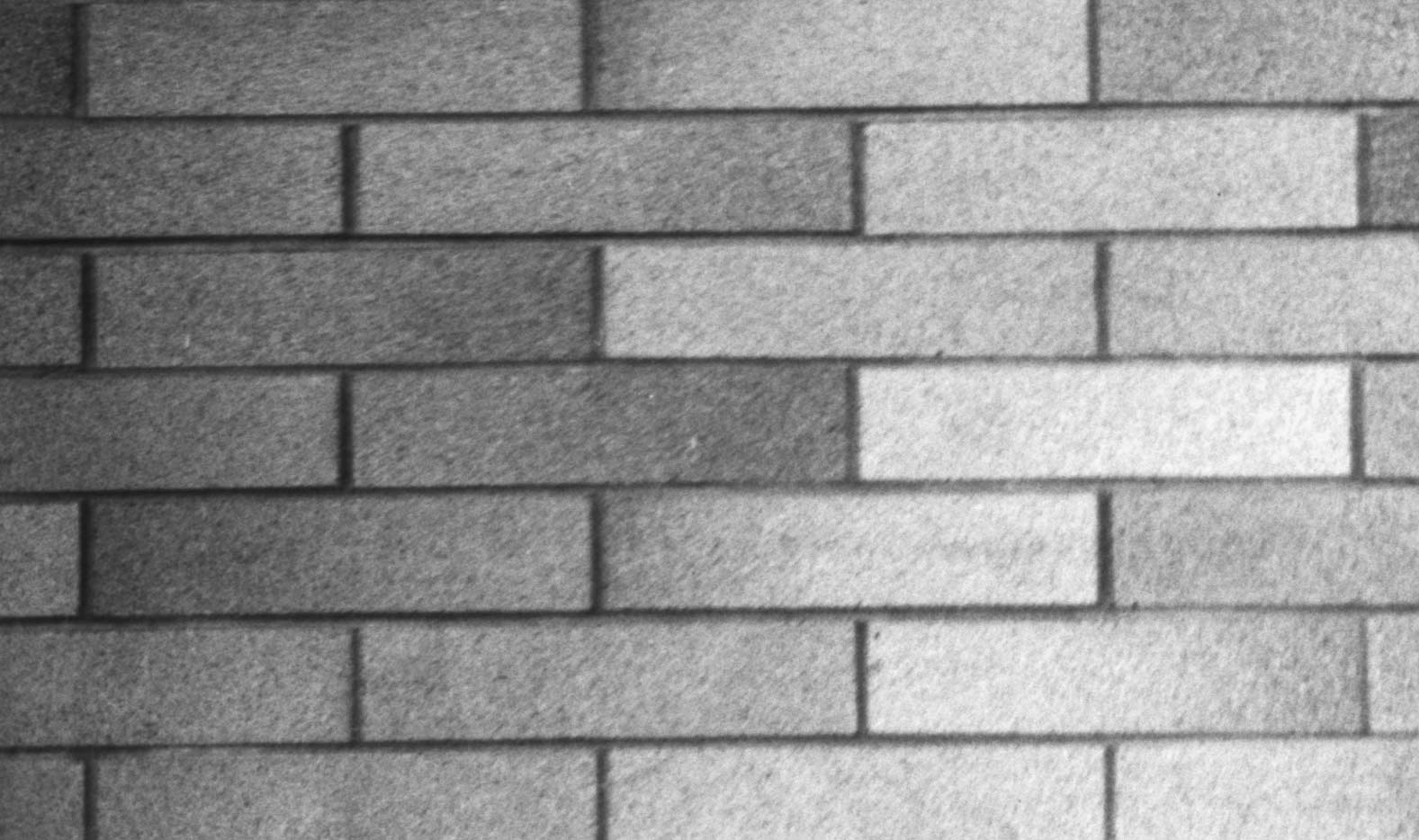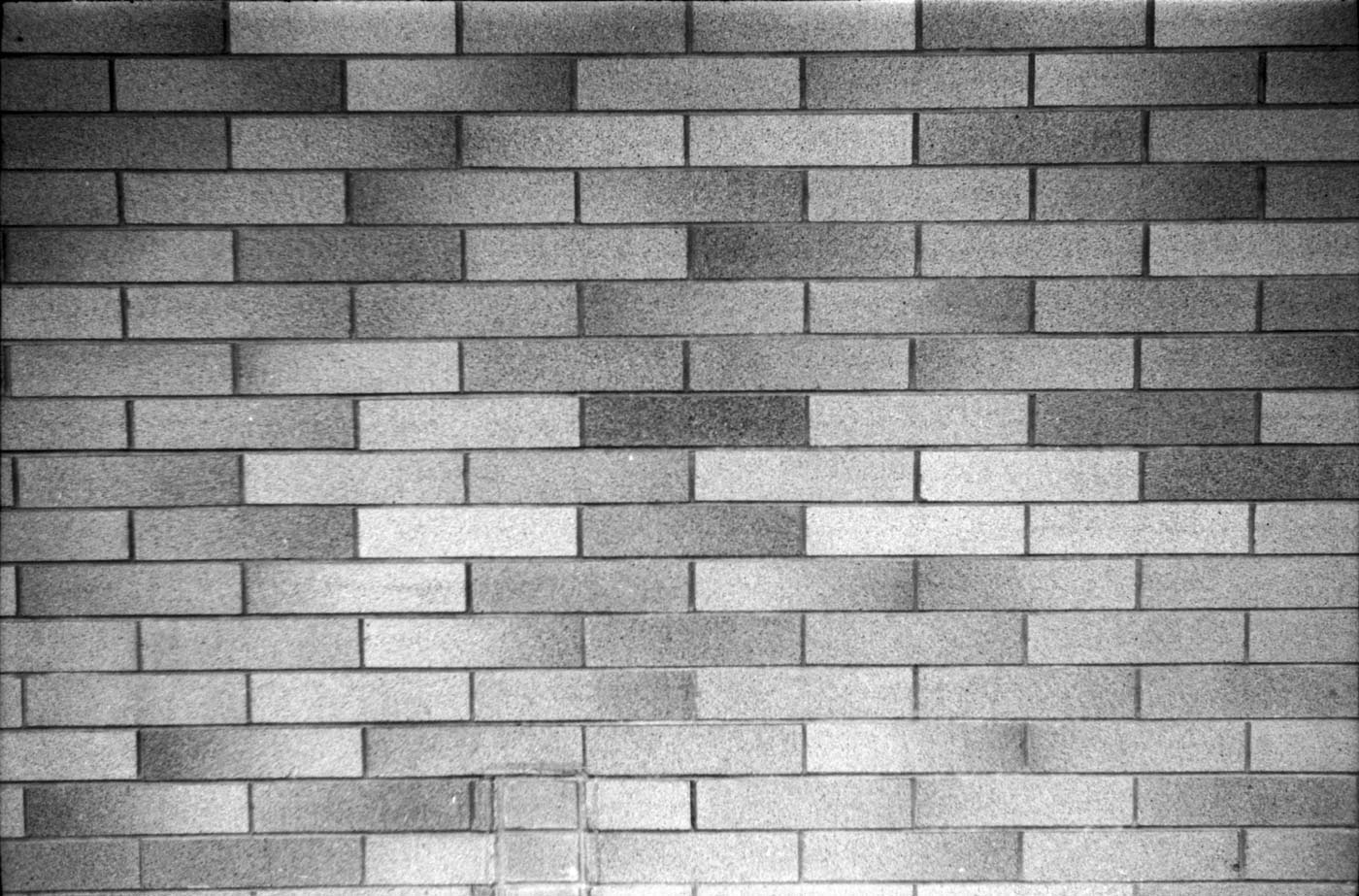Canonex
The SLR Canonet
Browsing on E-bay recently I came across two Canonex cameras for sale. One had a poor finish and the other had a dented filter ring. The prices for both were reasonable and so I opted for the one with the poor finish which you see in the photographs here. Learning about this camera has been very interesting!
To place it in context, Canon introduced the Canonet in 1961. Then in 1963 they came out with the Canonet Junior and in October of 1963 the Canonex. The Canon Museum groups the Canonex with the Canonets and it is easy to see why. The body is definitely that of a Canonet and the lens barrel externally resembles that on the Canonet. And the shooting experience is similar.
The Canonex was Canon’s first fully automatic SLR. The selenium cell light meter was placed above the lens in the center of the camera.
The equipment shoe on the top of the camera has no electrical contacts. Flash synchronization is via the PC terminal on the front of the camera.
The top deck is clean and simple. The frame counter counts up indicating number of images made.
There are no surprises on the bottom. Notice how similar the lens barrel is to that on the Canonet.
At the time of the release you should remember that Canon was still producing the Model 7 rangefinder camera and the Model 7s was still in the future. Canon getting into SLR cameras and was then producing the Canonflex RM. So it was early days for the SLR.
The Canonex is the only leaf shutter SLR made by Canon. The lens is fixed on the camera and the shutter is mounted in the lens. This means that the shutter must remain open for the image to be viewable through the viewfinder.
Although light is directed up to the ground glass by the mirror it still splashes back into the mirror box. To protect the film the mirror itself has light seals around its edges to keep stray light from the film.
When you fire the shutter, the shutter first closes, the diaphragm shuts down to the correct f/stop, then the mirror pops up, the shutter opens to expose the film, then closes, and the mirror comes down, and finally, the iris and shutter open and remain open.
The lens is a 48mm f/2.8 three element design. The shutter is a German made Copal with B and 1/15 to 1/500th settings.
Focus is a combination of a ground glass screen with a split image circle in the center.
The light is metered by a selenium cell mounted above the lens and the camera can be set to total automatic or it can be used in manual mode with metering indicated in the viewfinder on the right hand side. ISO can be set from 10 up to 400 which covers the standard films an amateur would use.
And now for a Mystery
Who made the Canonex? Sounds like a simple qustion with a simple answer. But apparently Canon’s records are not sufficient to give us that answer. What follows comes from Ron Herron’s “Collecting Mamiya 35mm” website.
The back swings open for simple film loading.
Notice the lack of focal plane shutter. You are looking at the back of the mirror when you look from the inside.
The Canonex User Guide says that the low sitting prism is the same prism as was being used in the Canonflex RM
Apparently in the early 60’s Bell & Howell Japan was Mamiya’s wholesaler in Japan but it was also Canon’s. And this common connection may have given rise to some joint SLR development. Mamiya, in their 50th Anniversary promotional booklet, actually mentions a “joint technology development” with Canon to create a 35mm EE SLR camera.
Mamiya did market at the same time a camera called the Auto-Lux 35. It was almost identical to the Canonex down to location of assembly screws and the PC socket. There are minor differences in the finish but the shutters are the same and the 48mm f/2.8 appears identical to the one on the Canon camera. An examination of the two cameras side by side, inside and out, there is no doubt that these come from a common source. But what source?
Mamiya Auto-Lux 35
The Mamiya Auto-Lux 35 and the Canon Canonex may be the same camea under the skin. Amazingly neither Canon nor Mamiya have records sufficient to say they are or they aren’t. But a side by side comparison makes you think they are the same camera in different skin. Open the back, look at the metal pressings, the pieces, the placement of the screw holes, and see what you think.
Another comparison that will help are the Owner’s Manuals. Similar diagrams, same operating principals, same cameras?
Apparently there are Canon records that suggest the Canonex had a very short production run of less than six months and that only about 20,000 were made. That seems high to me because you don’t see many of them around however it may be that the number represents the total which was shared by the two companies. But more than that is not really known. Peter Dechert, an acknowledged expert on Canon cameras of the era, says he doesn’t know the answer but leans to the theory that Mamiya made these cameras. But he is not sure. It is amazing that both companies have such poor records for this period. But that does make it a mystery: who built the Canonex?
My Canonex
| Collection No.: | C-339 Serial No.: 119051 |
| Introduced: | October 1963 |
| Lens: | 48mm f/2.8 |
| f stops: | 2.8 – 22 |
| Shutter: | Copal Leaf Shutter |
| Acquisition: | 20 Jan 2020 |
| Condition: | Finish is somewhat corroded but otherwise the camera is generally Very Good. It appears to function as it should except for the light meter. |
| Notes: | When I got my Canonex the finish was not in great shape. Not as bad as it looks in these pictures though. The surface seems pebbled and stained. But other than that the camera is in good shape. The oil has solidified so that focus is stiff but the shutter sounds good. The light meter is erratic and not reliable. The whole camera needs a good cleaning. But I like it and intend to keep it. |
So how does it Perform?
Since the camera seemed to be functioning the obvious test was to put a roll of film in it and go for a walk. As the light meter is not reliable, I also took my Sekonic light meter. The film in my bulk loader at the time was Ilford Delta 100 so I loaded a roll of 24 exposures and set out. Now, you have to remember that this is a 3 element lens in 3 groups so compromises have been made. And remember the target audience: folks who are not photographers and simply want good pictures of their trips or the family. Basically it is intended as a Point and Shoot.
One thing I don’t like is the iris diaphragm. It is not round but rather a four sided uneven diamond shape set on its side. Even stopped down, light from the edges of the lens is passed through to the film. One of the compromises I mentioned.
The camera functioned well mechanically and when I developed the film all the frames were uniformly exposed although I tried several shutter speeds and f/stop settings. So shutter and iris are working. The shooting experience itself is very much like that with the Canonet.
First stop was the brick wall test. With the regular rectangular grid of bricks and mortar all kinds of information is to be found. Have a look at these images.
At f/2.8, which is wide open, there is a strong vignette but it is not symetrical. Seems concentrated at the top. I think this is a result of the primitive iris diaphragm.
At 100% the center of the frame is very soft. However, notice this simple lens is amazingly free of distortion even when wide open.
At 5.6 the vignette problem has improved and sharpness has increased across the frame. However, this is still not what you could call a sharp lens.
This camera handles very much like a Canonet. The body is the same in size and form except for, of course, the mirror box. I like to try the lenses separately on my Canon R but that is not possible in this case. The lens is not removable. So testing with film was the only option.
The controls on the lens barrel handle and feel like those on a Canonet. Shooting is easy and reasonably quiet. I wish the meter was working so I could try it as a true “point and shoot”. I think it would be a lovely camera. But manual mode is easy and I had no problems with it.
The questions is, with proper post processing, can this camera, shooting film, take a decent picture?
This is a scene in our local park where I walk frequently. For a 3 element lens the quality is pretty good. The lens was set to f/8.0 but the image is still soft in spite of post processing. However, remember that this camera was never offered as a pro quality device. It was always intended to be an advanced snap shot camera. And for color slides or 4 x 5 inch prints it works just fine. It was what it was advertised to be.
On the back wall of our house is a large clock visible from anywhere in the yard. It makes a great subject when you want to see how a lens performs. The image, taken at f/11, shows almost no distortion and good definition. This camera actually takes a decent picture so long as you do not intend to create big enlargements. That said, this image would make a fine 8 x 10 inch print.
This camera is a little deceiving. Because it looks like an SLR it is easy to expect the performance found in an AE-1 or FTb. But what you get is a level or two down as you would expect if you were shooting with a Canonet. I like it. It was fun to shoot and if the light meter was working it would make a great little family camera.
This website is the work of R. Flynn Marr who is solely responsible for its contents which are subject to his claim of copyright. User Manuals, Brochures and Advertising Materials of Canon and other manufacturers available on this site are subject to the copyright claims and are the property of Canon and other manufacturers and they are offered here for personal use only.

